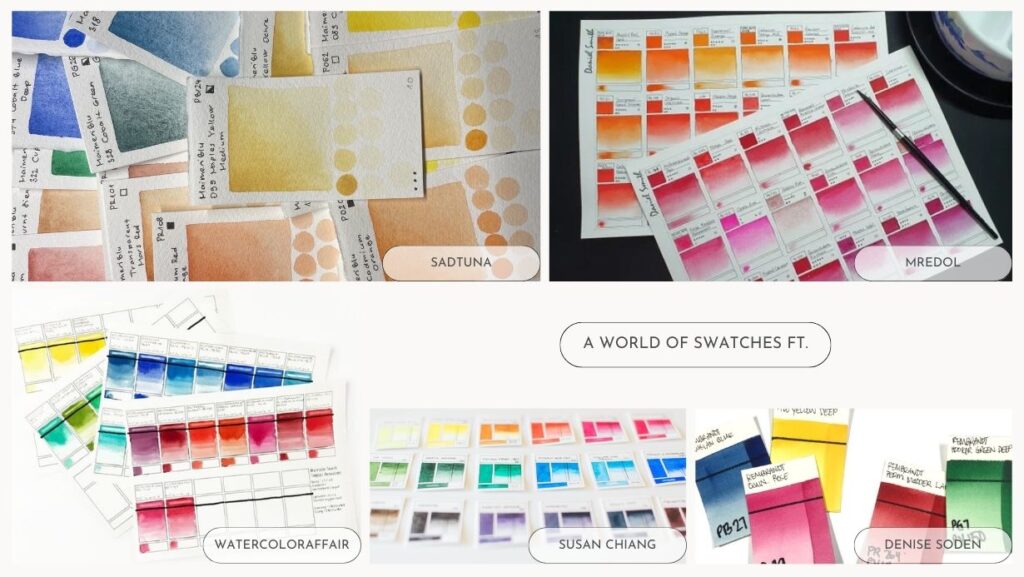Ink
It is essential to use waterproof ink if you want to keep your swatches clean and avoid ink smearing into the paint as you swatch.
I tend to use:
– Black sharpie for the thicker lines.
– Micron/fountain pen with platinum ink (or any waterproof pen ink) for thinner lines and writing.
(It is fine to use non-waterproof ink for the text; I prefer to keep to the same pens to avoid picking up the wrong one.)
If you are using a stamp to make your swatch cards, you also need to ensure that the ink you pair them with is waterproof.

KISS: keep it simple! If you don’t have a stamp or pre-printed cards, then you are going to be drawing a looooot of boxes.
For your sanity, make sure that your design is something you can easily repeat. You may end up with hundreds of swatches by the end of it!
Paper
If you have lots of colours to swatch, it might be tempting to get some cheap watercolour paper to save on money. I’d advise against this in general (card size dependent, see below); pigments can act very differently on cotton vs cellulose paper, or even between two brands.
By using the same paper as you do your art on, you can be sure to have the most accurate information on your paint.
I personally use 300gsm Saunders Waterford CP paper, which is 100% cotton in high white, and available at a reasonable price. For me, it’s worth the investment.

Swatch Card Size
This is completely up to what you prefer; I use a 2.5 x 3.5 inch card as they fit perfectly into the plastic wallets I have, but there are plenty of different sizes out there. You might also decide to divide up a large piece of paper and keep your swatches “attached” rather than cut into individual cards.
What to Include
You might only need a swatch of the mass tone, or a simple gradient. As you get more adventurous however, you might want to look into:
– Dispersion
– Opacity
– Staining/Lifting
– Granulation
– Mixes with Primary Colours
Anatomy of a Swatch Card
I specifically designed these cards to not use a lot of paint. My previous swatch cards were great for seeing masstone, however when I had only small samples of paint (I’m totally not looking at you, winsor and newton… schmincke…), the colours were a poor representation, looking washed out and unpigmented.
Additionally, I found that I was able to include more than one test in these modified swatch cards, and include all information essential to my painting.








One Comment
Pingback: